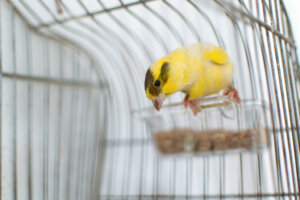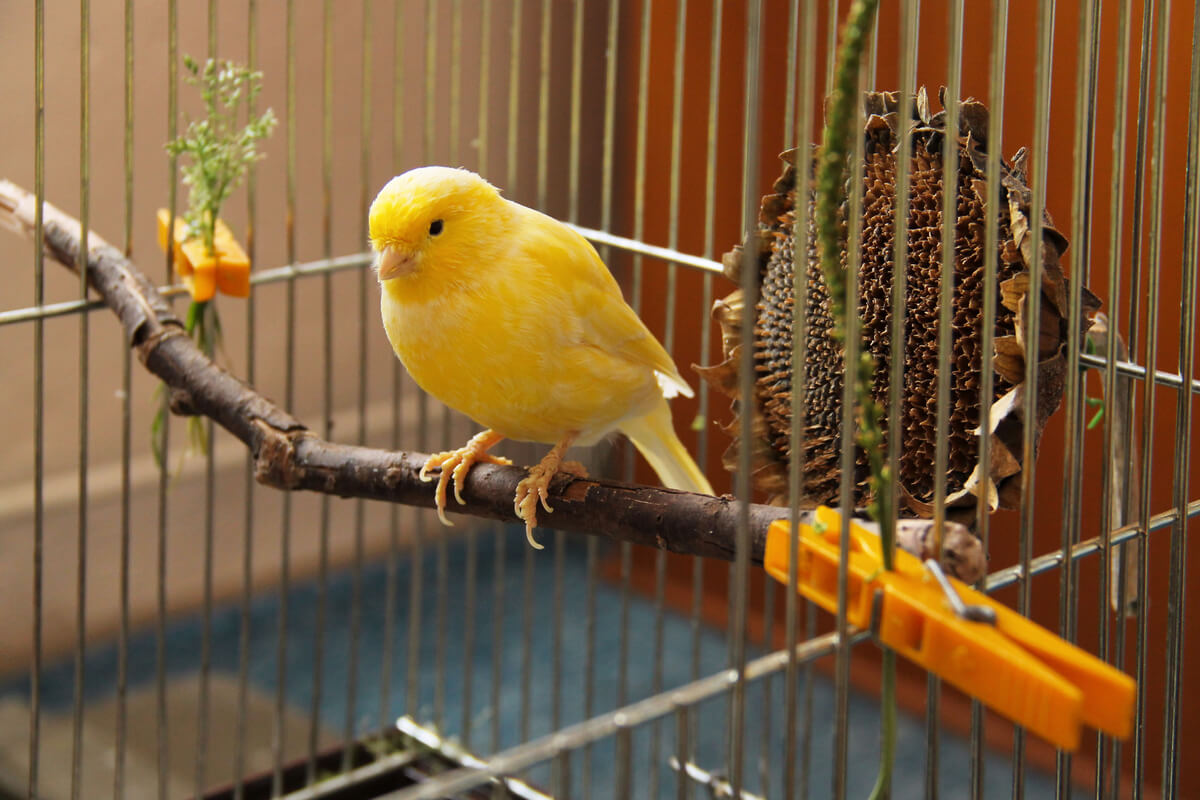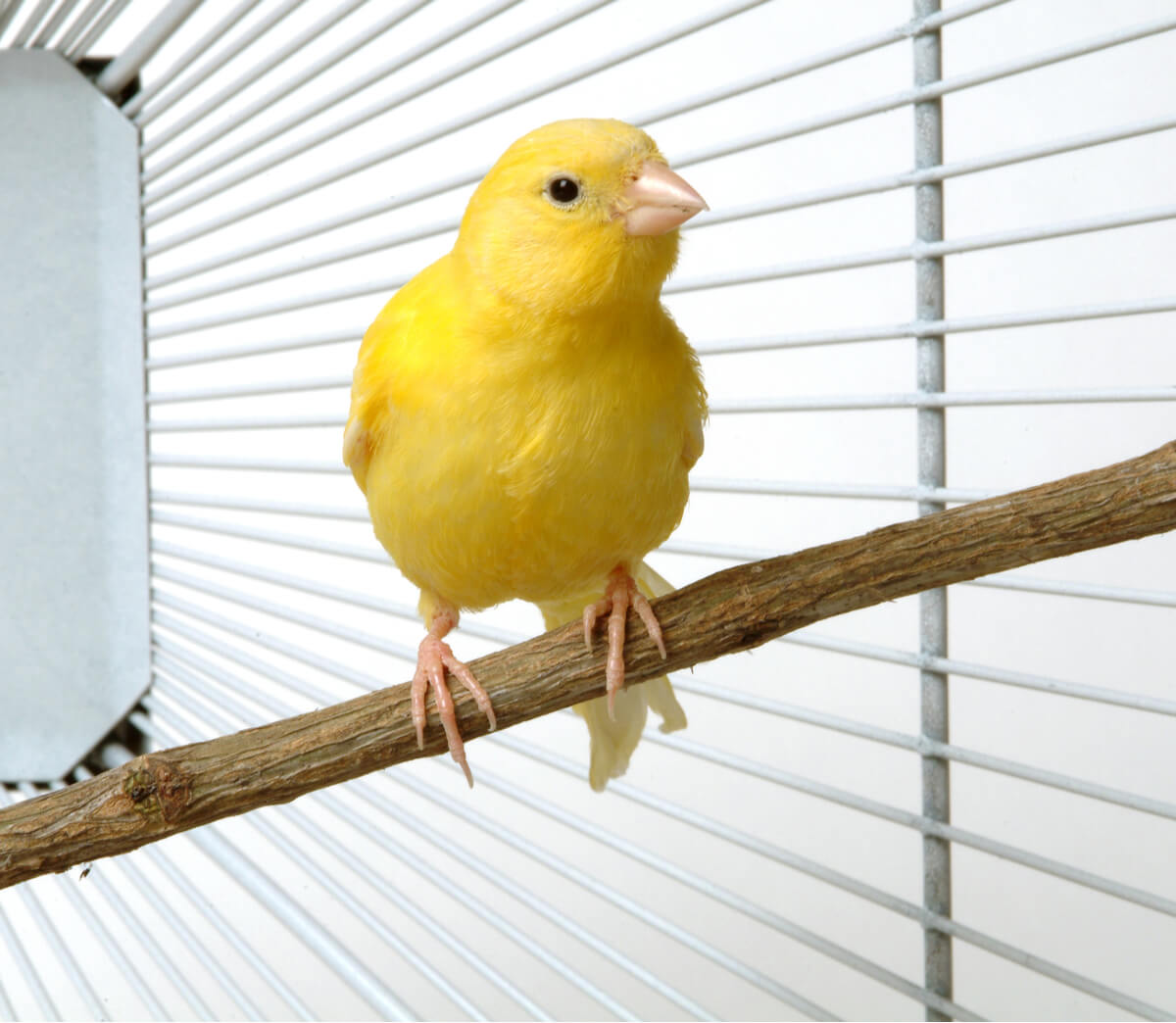How to Cut a Canary's Nails


Written and verified by the biologist Cesar Paul Gonzalez Gonzalez
Canaries are one of the best-known and best-loved small birds due to their beautiful, harmonious song, and this has made them very popular as pets. In addition, they don’t require too much care to keep them in captivity, so it’s easy to keep several of them at home. However, their nails can become quite problematic and, in this article, we’ll deal with the issue of how to cut a canary’s nails.
One of the problems that can develop in captivity is the excessive growth of their nails, which need to be trimmed to avoid problems. Continue reading and discover how to carry out this process.
Is it necessary to cut a canary’s nails?
Canary nails are usually worn down in the wild due to the fact that they perch in on uneven branches. The friction between their legs and the wood prevents them from growing excessively, and so there’s no need for them to be cut. The problem arises when their cage perches are too flat. As a result, their nails aren’t naturally filed and tend to grow far too much.
This becomes a serious problem for the birds, as the length of their nails prevents them from being able to move around properly. In addition, it causes them to get “stuck” on the edges of their cages, which can lead to a serious accident. When this occurs, the owners should intervene and cut the excess nails.

Can I cut a canary’s nails at home?
Although it isn’t always recommended, owners can attempt to cut their canary’s nails at home. Of course, you must follow the instructions of a professional and do it very carefully. It’s important to be aware that any mistake during this procedure could cause a serious injury to the pet, and a lot of stress all round.
What do you need?
Before you start trimming your pet’s nails, you should gather all the materials and help you’ll need during the procedure. First of all, it’s best to have another person hold the bird while you carry out the trimming. Keep in mind that you’ll need the following items:
- Nail clippers: There are some special clippers for small pets with an integrated light. It’s possible to use the ones we use, but it isn’t recommended.
- Towel: This will help you to calm the bird down and handle them better. The stress of this event has potential repercussions on its health, so you should try to keep it to a minimum as much as possible.
- Disinfectant and gauze: You can use a special commercial disinfectant for birds, physiological saline solution, or hydrogen peroxide diluted at 50%. You can use this in case of an accident and you cut the nail too much, causing bleeding that must be stopped as soon as possible.
Canary nail trimming procedure
Keep in mind that the nail trimming process is very stressful for canaries, so you’ll need to do it quickly and carefully. Once you have everything ready, you should catch the bird in your hands and hold it without squeezing too tightly. Try to talk to it lovingly to calm it down, and then take into account the following steps:
- Start by covering it with a towel. Start by covering part of its body and progressively cover it completely. Leave only the legs uncovered and remember to keep a firm grip so that it doesn’t escape. This will reduce the pet’s movements, but you’ll still have to do it quickly because it isn’t a pleasant experience for the bird.
- Carefully stretch each toe and start cutting the nail. Take each toe carefully and position the nail clipper. Remember not to cut the blood vessels that are visible in the nail (pink color), as this will cause an injury that you’ll have to deal with straight away. Pet nail clippers usually have an integrated light to better detect the veins and thus avoid them.
- In case of bleeding, clean the wound with disinfectant and gauze. If by accident you caused bleeding by cutting part of the blood vessels, you must act quickly and clean the wound very carefully. The best thing to do is to stop the process and go immediately to see a veterinarian. The wound may not be too serious, but the vet will be able to finish cutting its nails safely.
- Return the specimen to its habitat and observe its behavior. If everything went well, all you have to do is return the animal to its cage and observe it for a few moments. If you detect any unusual behavior or blood in its extremities, don’t hesitate and take them to the vet.
What’s best? Trimming my canary’s nails at home or taking it to the vet?
The best option will always be to let a vet trim a canary’s nails. This isn’t only because of the experience that they have, but also because they can act immediately in case medical assistance is needed. It’s important to note that the stress of this process could cause serious heart problems for the bird, so it’s good to have a vet to turn to nearby.

Can I stop a canary’s nails from growing without trimming them?
As mentioned earlier, canaries naturally wear down their nails through friction on uneven surfaces in the wild. With this in mind, you can provide them with places such as rocks or wooden sticks in their habitat, in order to file off the excesses on their own and avoid excess growth.
There are also some covers for perches that work as if they were a sort of file, reducing the length of the nails and avoiding unnecessary cutting. Remember that this procedure carries a risk for your pet’s life and so it’s always better to do all you can to prevent them from growing in the first place, or to let a professional carry it out.
All cited sources were thoroughly reviewed by our team to ensure their quality, reliability, currency, and validity. The bibliography of this article was considered reliable and of academic or scientific accuracy.
- Lightfoot, T. (2020) Injuries and Accidents of Pet Birds. Recuperado el 26 de enero de 2022, disponible en: https://www.msdvetmanual.com/bird-owners/disorders-and-diseases-of-birds/injuries-and-accidents-of-pet-birds
- Unusual pet vets (2018) Pedicures for Pets – how to keep your pets nails healthy!. Recuperado el 26 de enero de 2022, disponible en: https://www.unusualpetvets.com.au/wp-content/uploads/2018/07/Pedicures-for-Exotic-Pets-Nail-Trimming.pdf
- Bradley, F. (2005) Care of Beak, Nails, and Spurs in Backyard/Fancy Poultry. Recuperado el 26 de enero de 2022, disponible en: https://poultryhealthinspection.ucdavis.edu/sites/g/files/dgvnsk6691/files/inline-files/care-of-beak-nails-spurs.pdf
- Malina, C. (2013) Bird Grooming Tips: Coping, Nail Trims and Bathing Options. Recuperado el 26 de enero de 2022, disponible en: https://naturalencounters.com/wp-content/uploads/2020/04/BirdGroomingTips.pdf
This text is provided for informational purposes only and does not replace consultation with a professional. If in doubt, consult your specialist.